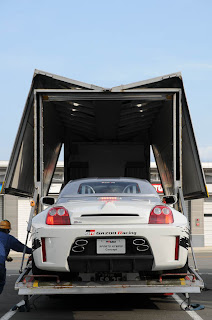Ferrari has made available a new customization program for customers who are setting the model 458 Italia 2011.
The big news is the new color Fire Red, Fuji and Triple White Yellow Strato. In addition, Italia Ferrari 458 can be configured in two-tone with the roof, the columns and the engine hood of the truck in a different color.
Are also part of the new customization program some external details in carbon fiber, such as air vents front and rear, side skirts, door sill and casing of the engine compartment, all produced in the same chamber used by Formula 1 team .
The interior of Italy 458 can be ordered with sports seats molded carbon fiber and covered in leather and Alcantara, with stitching in a contrasting shade. The dashboard and steering wheel can also be produced in carbon. Rounding out the equipment custom forged wheels rim 20 inch color Gray Metallic.
Italia Ferrari 458 has 4.5-liter V8 engine with 570 horsepower at 9,000 rpm, maximum torque of 540 Nm at 6,000 rpm and F1 gearbox and double clutch 7 speed gearbox.
Two features of your interior stand out: all the instrument panel and trip computer are displayed on two LCD screens, one on each side of the large tachometer. There is no longer the lever left turn signal and high beam, or the right lever for the windshield wiper. These commands are on the wheel, which also accommodates the Manettino - to select the mode of flying.
In Manettino, you can choose between the following modes:
LOW GRIP - this position ensures stability on wet or gravel roads. In it, the pilot can use the levers of the steering gear changes and the system sets up the suspension so comfortable.
SPORT - ideal way to dry and major highways without speed limit. The suspension is hard and the car focuses on performance and stability at high speeds. The traction and stability control (TSC) are still acting, giving the pilot greater freedom in the maneuvers.
RACE - This setting should only be used on the racetrack. The changes of speed and get faster CST reduces interference in driving.
CT - this position just off the traction control.
CST - is the stage that enables and disables the traction and stability controls. In position, the car's reactions are just under the command of the pilot, the only remaining active ABS and EBD - Electronic Brake Distribution.


















